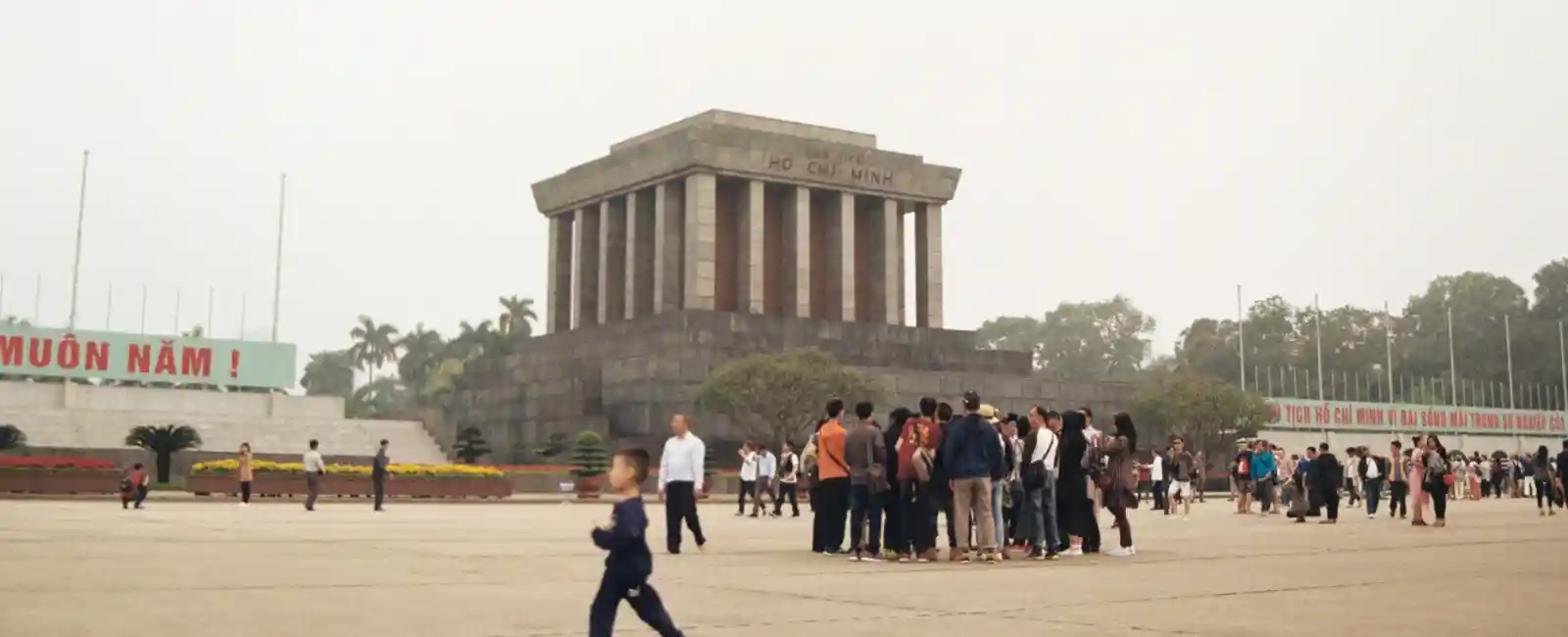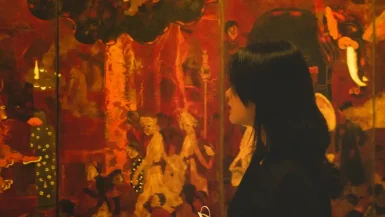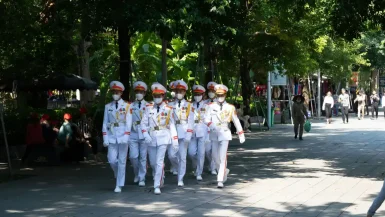Introduction
Ho Chi Minh Mausoleum serves as a powerful symbol of Vietnam’s tumultuous history. Located in Hanoi’s heart, this monumental structure marks the final resting place of Ho Chi Minh, the revered leader who guided Vietnam to independence. The mausoleum isn’t just a tourist attraction; it’s a pilgrimage site for many Vietnamese people. For global visitors, it offers a unique glimpse into the nation’s deep respect and love for their revolutionary leader. The site reflects the enduring legacy of a man who profoundly influenced Vietnam’s path to freedom and self-determination.
Historical Significance
Ho Chi Minh Mausoleum isn’t just a place to honor a leader; it represents national pride and resilience. The structure reminds visitors of the countless sacrifices made by the Vietnamese during decades of struggle against foreign powers. Every brick in the mausoleum echoes the collective determination of a nation that never bowed to colonial oppression. Here, history and ideology intersect, offering visitors a profound sense of Vietnam’s journey towards self-determination. Ho Chi Minh’s legacy continues to inspire new generations, embodied in this monumental structure. The mausoleum’s construction required meticulous planning, incorporating traditional Vietnamese architecture with Soviet design, reflecting the era’s political alliances. Preserving Ho Chi Minh’s body ensures his presence continues to inspire and guide the Vietnamese people. Today, the mausoleum stands as a beacon of unity, symbolizing the culmination of Vietnam’s long and arduous path to freedom.
Architectural Marvel
Architecturally, Ho Chi Minh Mausoleum is a masterpiece that blends traditional Vietnamese design with Soviet influences. The structure is imposing, with its rectangular shape, massive columns, and use of gray granite, all of which convey a sense of solemnity and reverence. The exterior of the Mausoleum is adorned with inscriptions of Ho Chi Minh’s famous words, reminding visitors of his lasting legacy. As you approach the mausoleum, you’ll notice the beautiful gardens surrounding it, meticulously maintained and filled with vibrant flowers. These gardens symbolize the peaceful vision Ho Chi Minh had for his country, contrasting with the stark and solemn design of the mausoleum itself.
Inside Ho Chi Minh Mausoleum: A Sacred Space
Entering the Mausoleum deeply moves you. Inside, the atmosphere demands deep respect and silence. Guards in crisp white uniforms stand at attention, ensuring everyone honors the sanctity of the mausoleum. As you walk through the dimly lit corridors, anticipation builds. You reach the main chamber where Ho Chi Minh’s body rests. His embalmed body lies in a glass case, dressed in his iconic simple clothing. Visitors move slowly, showing their respects. Seeing Ho Chi Minh’s preserved body humbles and awes you, reminding you of the sacrifices made for freedom.
The room brims with a palpable sense of reverence, as everyone moves quietly. The gentle hum of air conditioning serves as the only sound, enhancing the serene atmosphere. Soft lighting casts a gentle glow on Ho Chi Minh’s figure, highlighting his peaceful expression. Every detail, from the guard’s positioning to the visitor’s path, honors the leader’s memory. The cool temperature preserves the body’s integrity, deepening the stillness in the air. Standing before Ho Chi Minh’s body, a wave of history washes over you, connecting you to the struggles and triumphs that shaped modern Vietnam. As you exit the chamber, the experience’s gravity lingers, deepening your understanding of Ho Chi Minh’s enduring legacy.
Visitor Experience
Visiting the Mausoleum requires showing decorum and respect. This site holds national reverence, so visitors must follow specific protocols. Plan your visit with the mausoleum’s schedule in mind, as it opens from 7:30 AM to 10:30 AM, Tuesday through Thursday, and on weekends. The mausoleum remains closed on Mondays and Fridays, and for two months each year (typically October and November) for maintenance. Arrive early to avoid long lines, which can move steadily but still require patience. Dress modestly, avoiding shorts and sleeveless tops, as the mausoleum prohibits them. Also, store cameras and bags outside, as the site does not allow them inside.
Speak quietly and avoid disruptive noises while inside the mausoleum. The solemn atmosphere calls for maintaining a quiet demeanor to show respect. Guards stationed throughout the mausoleum guide visitors to ensure proper behavior and flow. Remember, smoking is strictly forbidden within the mausoleum grounds. Since photography isn’t allowed inside, focus on capturing memories with your eyes and heart. If you’re visiting with children, explain the importance of being quiet and respectful during the visit. Reflect on the site’s historical significance while waiting in line, deepening the meaning of your experience. Finally, complement your visit with a stroll through the surrounding gardens, where the peaceful atmosphere enhances the reverence of the Ho Chi Minh Mausoleum.
The Significance of Ho Chi Minh Mausoleum in Vietnamese Culture
For many, visiting Ho Chi Minh Mausoleum is a deeply personal journey. Families often undertake this pilgrimage together, passing down stories of their own or their ancestors’ experiences during the Vietnam War. Visiting the mausoleum becomes a way for families to keep Ho Chi Minh’s legacy alive for younger generations. The silence within the mausoleum is profound, with each visitor reflecting on the sacrifices that secured Vietnam’s independence. The occasional sound of soft sobs punctuates the solemnity, a testament to the deep emotional connection many feel. Outside, in Ba Dinh Square, students gather to learn about their history, often laying flowers as a mark of respect. Veterans stand quietly, their faces lined with memories of battles fought and lives lost.
Exploring the Ho Chi Minh Complex: More Than Just a Mausoleum
While the mausoleum serves as the centerpiece, the Ho Chi Minh Complex offers much more to explore. Adjacent to the mausoleum stands the Presidential Palace, a grand yellow building surrounded by lush gardens. Although the palace itself isn’t open to the public, you can stroll through the surrounding gardens and admire the architecture. Nearby, you’ll find Ho Chi Minh’s stilt house, a simple wooden structure where he lived from 1958 until his death in 1969. The stilt house reflects Ho Chi Minh’s humble lifestyle and his connection to the Vietnamese people. The One Pillar Pagoda, another iconic structure within the complex, is a must-visit. Built in the shape of a lotus, this unique pagoda is one of Vietnam’s most famous Buddhist temples.
How to Get to Ho Chi Minh Mausoleum
Ho Chi Minh Mausoleum is conveniently located in Ba Dinh Square, Hanoi, making it easily accessible from various parts of the city. If you’re staying in the Old Quarter, the mausoleum is just a short taxi or motorbike ride away. Alternatively, you can enjoy a leisurely walk through Hanoi’s tree-lined streets to reach the mausoleum. Public buses also service the area, with several routes stopping near Ba Dinh Square. Once you arrive, the entrance to the mausoleum is clearly marked, and you’ll likely see a line of people waiting to enter.
The square itself is a significant historical site, adding to the gravity of the experience. As you approach, the vast open space of Ba Dinh Square offers a moment of reflection before you enter the mausoleum. The surrounding area is well-maintained, with ample signs and directions ensuring you find your way easily. Nearby, you’ll also find cafes and souvenir shops where you can relax before or after your visit. If you choose to walk, the journey offers a chance to explore Hanoi’s local life, with street vendors and locals going about their day. Taxi and motorbike services are plentiful, making your journey to the mausoleum stress-free. Whether you arrive by foot, bus, or vehicle, the path to Ho Chi Minh Mausoleum is straightforward and well-marked.
Nearby Attractions
After visiting the Mausoleum, take some time to explore the nearby attractions. Ba Dinh Square itself is a significant historical site, as it was here that Ho Chi Minh declared Vietnam’s independence in 1945. The Ho Chi Minh Museum, located just behind the mausoleum, offers a deep dive into the life and legacy of Ho Chi Minh. The museum’s exhibits include personal artifacts, photographs, and documents that chronicle Ho Chi Minh’s life, from his early days as a revolutionary to his leadership during the war. The museum is a must-visit for those interested in understanding the full scope of Ho Chi Minh’s impact on Vietnam and the world.
Tips for a Meaningful Visit
To fully appreciate your visit to Ho Chi Minh Mausoleum, it’s essential to approach it with the right mindset. Take your time to absorb the atmosphere, reflect on the history, and understand the significance of what you are witnessing. Reading up on Ho Chi Minh’s life and Vietnam’s history before your visit can enhance your experience, providing context to the site and its importance. Reflect on the immense impact Ho Chi Minh had on the Vietnamese people and their struggle for independence. Respect the solemn nature of the mausoleum by maintaining silence and following the guidelines provided by the staff. As you walk through the site, think about the sacrifices made by those who fought for Vietnam’s freedom.
Lastly, consider combining your visit to Ho Chi Minh Mausoleum with other historical sites in Hanoi, such as the Hoa Lo Prison or the Temple of Literature, to gain a more comprehensive understanding of Vietnam’s past. Taking the time to visit these additional sites can enrich your perspective and deepen your connection to the country’s rich cultural heritage.
The Enduring Legacy of Ho Chi Minh Mausoleum
Ho Chi Minh Mausoleum represents Vietnam’s enduring spirit and its journey towards independence. Standing before the mausoleum, you don’t just see a building; you witness the embodiment of a nation’s aspirations, struggles, and triumphs. Ho Chi Minh’s legacy continues to inspire generations, and his mausoleum stands as a testament to the profound impact one leader can have on history. A visit to Ho Chi Minh Mausoleum offers a deeper understanding of Vietnam’s past and a glimpse into the heart of its people. This journey is not just about seeing a monument; it’s about connecting with the values that have shaped a nation and continue to guide it into the future.
Final Thoughts
Ho Chi Minh Mausoleum is a must-visit for anyone traveling to Hanoi. It offers a unique blend of history, culture, and reverence, making it one of the most significant sites in Vietnam. Whether you are a history enthusiast, a cultural traveler, or simply someone seeking to understand Vietnam’s soul, Ho Chi Minh Mausoleum provides a rich and rewarding experience. The journey to Ho Chi Minh Mausoleum is not just about seeing a monument; it’s about connecting with the values that have shaped a nation and continue to guide it into the future.
In conclusion, the Ho Chi Minh Mausoleum is not just a place but a powerful symbol of a nation’s resilience, unity, and unwavering spirit. The experience of visiting this sacred site will leave a lasting impression, deepening your appreciation for Vietnam and its extraordinary history.



